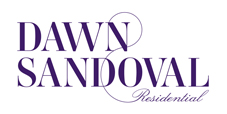 Q. I am thinking of buying for investment but a wee bit green when it comes to actually knowing how the whole property investment world works, can you give me a brief lowdown on investing in property?
Q. I am thinking of buying for investment but a wee bit green when it comes to actually knowing how the whole property investment world works, can you give me a brief lowdown on investing in property?
A. There are two ways landlords make money through letting property; the first way is capital growth and the second -rental income. When a property increases in value over time, it is known as ‘capital growth’. Capital growth, also known as capital appreciation is of course the biggest incentive to buy but do remember that the value of property does go up as well as down, and of course the local conditions surrounding your property can have a big effect. Rental income is what the tenant pays you – hopefully this will grow over time too. In addition to the all important income, you will also need to budget for a number of necessary costs. I have highlighted below in a nutshell what these costs are so you are able to budget for them. This is especially important as ultimately you are responsible for these costs whether the property is occupied or not.
General Maintenance
Things break down and need to be maintained over time. You will need to allow a percentage of the rent to cover this. The type, age and condition of the property will obviously have an effect on repairs and maintenance of the property, so this should be taken in to consideration when choosing your property to purchase.
Furniture, fixtures and fittings
Allow for 10% of the rent each year to replace worn out fixtures, fittings and furnishings. Also, be prepared to re-decorate every few years.
Service charges and Ground rent
If the property is leasehold you’ll have to pay these charges, the tenant is only responsible for utilities and council tax.
Insurance premiums
Premiums for buildings insurance vary by area, type and size of property but allow for between 2 and 3% of the rent. For furnished property allow between another 1 and 4% of the rent depending on the level of furnishing.
Vacant periods
Don’t assume the property will always be occupied. Budget for a month each year when the property is empty – ‘void periods’ in landlord jargon.
Letting agent’s fee
Fees vary but a professional agent is likely to achieve a higher rent than if you find a tenant privately – remember that they have more market expertise and a greater selection of tenants for you to choose from which more than make up for their charges.
Of course, by far your biggest expense is likely to be your mortgage. In the current market most buy-to-let mortgage lenders will only lend up to around 70% of the property value, so you’ll need to put in a hefty cash deposit yourself too. Once you have deducted all these costs from the rent, you end up with your net expected rental income. If you divide this into the value of the property, including all the costs associated with buying it, you have the ‘net rental yield’. So, if net rental income is £20,000 and the property cost £400,000, the net rental yield is simply £20,000 divided by £400,000 which equals 0.05 or 5%. Once you do the maths, you may find that the net rental yield figure is less than the cost of your mortgage, leaving you with a shortfall. However, if you have bought well, you should expect the rental income to creep up over time – plus you should expect to see some capital growth too if you keep the property for a few years.









